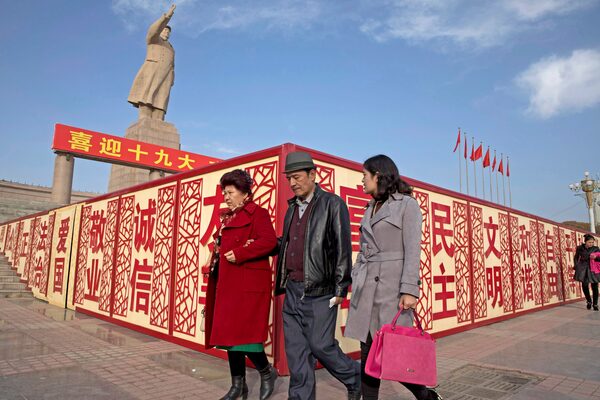How, in the most populated country, do you make a million people disappear? At first it sounds old-fashioned: You spend billions building a vast archipelago of high-security indoctrination camps across the mountainous far-western region of Xinjiang, you lock down the entire region, you seize hundreds of thousands of people from their families, for no significant reason other than their ethnicity, and you put them in coveralls, sometimes in chains, and shut them into those institutions, where they are forced to submit to authority.
The next question is more disturbing: How, in an ultraconnected country, do you keep the rest of the world from noticing and raising alarm?
For a surprisingly long time, Beijing succeeded. In May, 2014, Chinese authorities began their “Strike Hard Campaign Against Violent Terrorism,” aimed at pacifying the ethnically Turkic (Uyghur) population of Xinjiang. Initially, this involved arresting thousands on suspicion of Islamic terrorism or separatism.
In late 2016 or early 2017, the region opened a much larger network of “political re-education” camps, which have no basis in Chinese law and do not follow due process, and filled them with hundreds of thousands of people who were not legally accused of anything.
In recent months, the world at last raised alarm. Last month, the United Nations, after confirming the population of these camps, called on China to close them. Earlier this year, diplomats from Canada, France, Germany and Switzerland formally asked China to discuss the camps. Beijing refused.
Yet it was not governments that exposed those camps.

In this Nov. 4, 2017 photo, residents walk past a statue showing Mao Zedong near a square in Kashgar, in western China's Xinjiang region.Ng Han Guan/AP
Journalists in Beijing tell me they began to hear alarming but unsourced reports starting in 2014, emerging from the Uyghur-language media outside China such as Radio Free Asia and from diplomats reading reports from their information networks, that something was happening in Xinjiang beyond the usual heavy-handed policing and mass arrests. By early 2017, there were whispers of large-scale camps.
A few journalists risked their safety by making all-but-forbidden trips to Xinjiang. News of the scope of the camps, and the fact that this was now a mass ethnic roundup, was first broken in the summer of 2017 by my colleague Nathan VanderKlippe (who was detained by Chinese authorities), then by Megha Rajagopalan of Buzzfeed (who was expelled from China), by Josh Chin at The Wall Street Journal, by Gary Shih at Associated Press, Emily Rauhala at The Washington Post and Ben Dooley at Agence France-Presse.
They were aided by researchers who drew on data emerging from within China. Adrian Zenz, a German scholar, obtained work-tender contracts that revealed the size and purpose of the camps, and the billions being spent on them. Shawn Zhang, a University of British Columbia law student, combined Dr. Zenz’s documents with satellite images to reveal the precise location, rapid growth and widespread nature of the camp network.
“It took a lot of meticulous research – figuring out what’s going on took a combination of skills” from a wide range of organizations, said Maya Wang, the Hong Kong-based researcher for Human Rights Watch who researched and authored, with Sophie Richardson, a major new report on the mass ethnic persecution campaign in Xinjiang.
How did it take more than a year, after the reality of the camps had been confirmed, before China faced serious criticism? On one hand, it showed just how much Beijing is able to silence its citizens, in spite of – and sometimes because of – the world’s most sophisticated social-media networks. Anyone in China attempting to type the words for Xinjiang, Uyghurs or re-education camps literally found their words electronically erased.
But China used another trick: Its authorities spoke a language of counterterrorism and cultural fear used by many Western political parties and leaders today.
A mass ethnic roundup may not be the best way, but “maybe it’s the necessary way to deal with Islamic or religious extremism, because the West has failed in doing so,” Li Xiaojun, a spokesman for the Chinese government’s State Council Information Office, told reporters outside a UN Human Rights Council meeting in Geneva this month. “Look at Belgium, look at Paris, look at some other European countries.”
The notion that terrorism is rooted not in criminal organizations and pathologies, but in entire ethnic groups and religions, is the motivating idea of the European extreme right, as it has been since the 1930s – the last time those parties were able to carry out mass ethnic roundups. There is no truth to the notion that attacks on ethnic groups constitute a form of terrorism prevention (quite the opposite, in fact.) But for some, that assertion was enough to shut their eyes on what was happening in western China.
 Doug Saunders
Doug Saunders